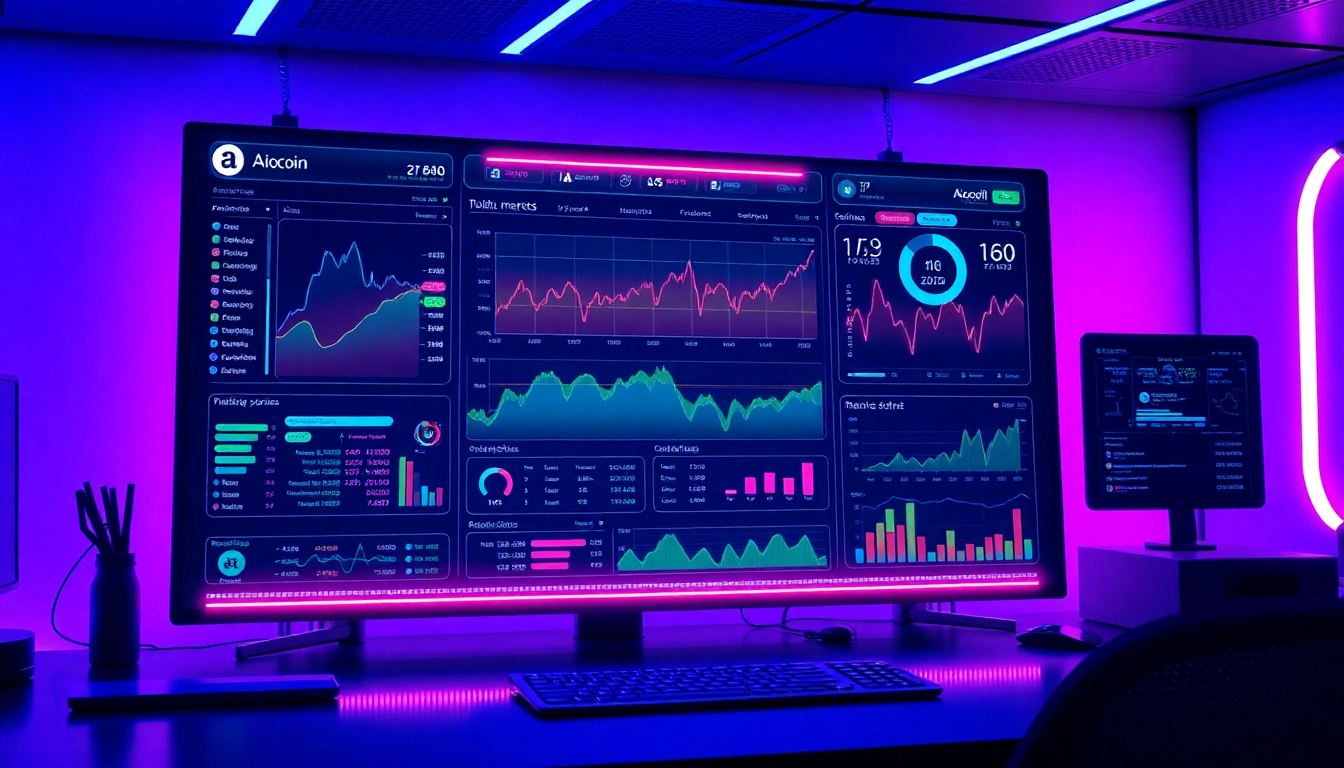Understanding Telehandler Rental: Basics and Benefits
In the dynamic world of construction, agriculture, and industrial logistics, the need for versatile, efficient, and reliable lifting equipment is paramount. Among the most essential machines facilitating these operations are telehandlers, also known as telescopic handlers. These robust machines combine the lifting capacity of a forklift with the extended reach of a crane, making them invaluable on diverse projects. For many organizations, especially those with fluctuating or project-specific needs, telehandler rental offers a flexible, cost-effective solution to access this critical equipment without the burdens of ownership. By opting for a Telehandler rental, companies can enhance operational efficiency, reduce expenditure, and access the latest machine technology tailored to their project requirements.
What is a Telehandler and How Does Rental Work?
A telehandler, or telescopic handler, is a powerful machine equipped with a telescopic boom that extends forwards and upwards. Its design allows for high-reaching lifting capabilities combined with high maneuverability, making it suitable for tasks such as loading, placing materials at height, and handling bulky items. Telehandlers can be fitted with various attachments like forks, buckets, or grapples, further increasing their versatility across different industries.
The rental process typically involves selecting the appropriate machine based on project needs, duration, and budget. Rental providers usually offer a range of telehandlers spanning different lifting heights and load capacities, from compact models suitable for tight spaces to large units capable of lifting heavy loads at significant heights. The process begins with consultation to assess requirements, followed by delivery of the machine to the site, operational instruction, and ongoing support if needed. Rental agreements in the UK generally include options for short-term (daily or weekly) or long-term (monthly) hire, with some providers offering additional services such as operator hire and maintenance packages.
Advantages of Renting Telehandlers for Construction Sites
- Cost Efficiency: Avoiding large capital expenditure, initial purchase costs, and ongoing maintenance allows companies to allocate resources more strategically.
- Access to Latest Technology: Rental companies frequently update their fleets, providing access to modern, more fuel-efficient, and safer models.
- Flexibility: Rentals can be tailored to specific project phases, enabling companies to scale equipment use up or down as needed without long-term commitments.
- Reduced Downtime: Rental providers often include maintenance, ensuring machines are serviced regularly, thereby increasing uptime and productivity.
- Risk Management: Leasing mitigates risks associated with equipment depreciation, obsolescence, and disposal costs.
- Operational Efficiency: Specialized fleet management, quick delivery, and support services streamline project workflows and minimize delays.
Furthermore, rental companies often offer comprehensive support, including delivery and pickup, operator training, and onsite assistance, ensuring smooth integration into your operations. These benefits collectively contribute to optimized project timelines, improved safety standards, and cost control, making telehandler rental a strategic choice for many construction and industrial enterprises.
Key Features to Consider When Renting a Telehandler
Size, Capacity, and Reach Capabilities
The first consideration should be the lifting height and load capacity required for your project. Telehandlers vary from compact models with 4-meter maximum lifting heights to larger units exceeding 20 meters. For example, a construction site needing to lift heavy materials to upper floors may require a telehandler with a high reach and substantial load capacity, sometimes up to several tons. Analyzing the specific tasks and weight requirements ensures selecting a model that is both safe and effective.
Types of Telehandlers: Manual vs. Operator-Driven
While some telehandlers are operated manually by trained workers, most rental operators prefer powered, machine-driven units with advanced controls. Some providers also offer telehandlers with operators included, which can significantly reduce training and operational risks. When selecting a rental, consider whether an operator is necessary or if your team has sufficient training to operate the machine safely. Operator hire options are common in the UK and can be integrated into the rental package for seamless workflow management.
Cost Factors and Rental Rates in the UK
Pricing for telehandler rentals in the UK depends on various factors, including machine size, rental duration, geographic location, and additional services. Typical daily rates might range from £100 to £300, while weekly rentals could be approximately £500 to over £1,500. Extra costs may include delivery, operator hire, fuel charges, and insurance. Comparing quotes from multiple providers and understanding the full scope of charges ensures cost-effective choices tailored to your project’s budget.
Choosing the Right Telehandler for Your Needs
Size, Capacity, and Reach Capabilities
Matching the equipment to your project’s demands is crucial. For tight urban sites or confined spaces, smaller models with narrow widths and lower heights are advantageous. Larger sites with extensive height requirements benefit from higher-reaching models capable of lifting heavier loads. Conducting a thorough site analysis—considering load weights, maximum lift height, and space constraints—ensures optimal selection. Consulting with rental specialists can help determine the ideal specifications for your project, avoiding undersized or oversized equipment that can lead to inefficiencies or safety hazards.
Types of Telehandlers: Manual vs. Operator-Driven
The choice between manual operation and operator-driven units depends on project complexity, safety considerations, and skill level of your team. Operator-driven telehandlers, often rented with trained personnel, enhance safety and operational efficiency, especially for complex tasks or high-risk environments. Manual units, suitable for experienced operators, may offer cost savings but require proper training and compliance with UK health and safety standards. Some rental companies provide operator-inclusive packages, streamlining logistics and minimizing the risks associated with inexperienced operation.
Cost Factors and Rental Rates in the UK
Understanding the total cost involves analyzing factors like rental duration, machine complexity, geographical delivery costs, and additional services such as operator hire or insurance. For example, a basic 4-meter telehandler might cost around £100-£150 per day, while larger models with higher reach could be priced at over £400 daily. Weekly rates generally offer better value, often around double the daily rate for extended periods. Planning ahead and requesting detailed quotes can help avoid unexpected expenses. Moreover, during high-demand periods, prices may fluctuate, so early booking and negotiation can secure better rates.
Best Practices for Safe and Effective Telehandler Use
Pre-Rental Inspection and Maintenance
Prior to rental, performing a comprehensive inspection—checking fluid levels, hydraulic systems, tires, and safety features—is essential. Maintaining a detailed log helps track ongoing maintenance and ensures the equipment operates reliably throughout the rental period. Regular checks during operation are critical to prevent malfunctions, reduce downtime, and ensure safety compliance.
Operator Training and Safety Measures
Proper operator training is vital to maximize safety and productivity. UK standards mandate that operators be adequately trained and certified to handle mobile machinery like telehandlers. Training should include safe operating procedures, understanding load limits, stability, and emergency protocols. Some rental providers offer on-site training or hire certified operators. Equipping operators with personal protective equipment (PPE), ensuring clear communication, and establishing site safety protocols further mitigate risks.
Compliance with UK Regulations and Standards
UK health and safety regulations govern the use of mobile elevating work platforms, including telehandlers. Compliance involves adhering to the Work at Height Regulations 2005, maintaining thorough risk assessments, and ensuring all safety features are operational. Regular safety audits, signage, and emergency procedures should be in place. Staying updated with evolving standards and involving qualified safety officers improves compliance and safeguards personnel and assets.
Maximizing ROI with Telehandler Rentals
Scheduling and Logistic Planning
Effective scheduling involves aligning telehandler availability with project milestones. Advanced planning ensures timely delivery and minimizes idle periods. Coordinating with rental providers for delivery and pickup reduces logistical complexities, saving time and costs. Implementing precise work schedules based on site activity levels ensures optimal utilization of the equipment.
Integrating Telehandlers into Your Construction Workflow
Integrating telehandlers seamlessly requires establishing clear operational procedures. Assigning dedicated operators, planning material handling sequences, and synchronizing with other machinery improve site efficiency. Utilizing telehandlers for multiple tasks, such as loading materials, positioning heavy equipment, and performing elevated work, enhances productivity. Regular communication among project managers, operators, and safety personnel ensures alignment and minimizes disruptions.
Case Studies of Successful Telehandler Usage
For instance, a UK residential construction project utilized rented telehandlers to streamline material delivery to upper floors, reducing labor and time costs by 20%. Another case involved an agricultural farm employing telehandlers for livestock feed distribution, achieving improved operational speed and safety. These examples underscore how strategic telehandler rental enhances project outcomes when aligned with operational needs.
Finding Reliable Providers and Cost-Effective Rates
Top Telehandler Rental Companies in the UK
Leading rental providers such as Sunbelt Rentals, Brandon Hire Station, and Speedy Hire have established reputations for quality equipment, reliable service, and competitive pricing. These companies offer extensive fleets, flexible rental terms, and comprehensive support, making them trusted partners for construction firms and industrial operators.
How to Compare Rental Packages and Contracts
Compare offers based on equipment specifications, rental duration, included services, delivery costs, and insurance options. Clarify terms regarding fuel policies, maintenance responsibilities, and penalties for damages. Reading reviews and seeking testimonials can also reveal service quality and customer satisfaction levels.
Additional Services: Delivery, Operator, and Support
Extra support services like on-site operators, scheduled maintenance, repairs, and technical support can significantly improve operational efficiency. Many rental firms provide next-day delivery and pickup, ensuring minimal disruption to your project timeline. Investing in comprehensive packages often results in better value and peace of mind, especially for large or complex projects.







